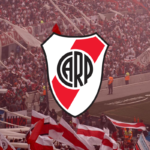


Along with the Obelisco, Casa Rosada is ostensibly one of the great architectural icons of Buenos Aires. The seat of the executive branch of the Argentine government, this building has been the backdrop for some of Argentina’s most significant moments. The pink facade conjures memories of Eva Perón as she voiced her well-manicured support for the Argentine proletariat, and of those devastating attacks and dramatic acts of social protest periodically played out at Plaza de Mayo.
What we see today at the east end of the Plaza de Mayo barely hints at this site’s former lives. In fact, the Casa Rosada itself is a patchwork of former buildings, with its foundations resting upon the remnants of Buenos Aires’s earliest moments. For example, the Casa Rosada is set on what was once the river’s edge. Although the port today has been contained at Puerto Madero, this site originally served as a colonial fortress, and then later a castle under the Spanish Viceroyalty.
After Spain’s exit from Buenos Aires, this site and the area now occupied by the Parque Colón was home to a customs house. Like Ellis Island in New York, this customs house served as the gateway to Buenos Aires for thousands of European immigrants in search of a new life. This large, Italianate structure designed by British architect Edward Taylor, was so prominent that it remained the largest building in the city until 1890. Although the customs house is long-gone, the Museum of the Casa Rosada excavated the old foundations that lay beneath the Casa Rosada and the Parque Colón, and have been offering tours of the tunnels since 2010.
Interestingly, this site didn’t become the home to the Argentine government’s executive offices until 1860. It was then that President Bartolomé Mitre mandated the construction of an Annex to the Customs House to serve as a headquarters for executive administrative activities.
It was under Mitre’s successor, Domingo Sarmiento, that Casa Rosada first donned its characteristic pink color. So, why is the Casa Rosada pink? There are two possible answers to this question. As the first legend states, the Casa Rosada’s pink is the result of the mixing of cow’s blood into white paint, which was meant to protect the building from the ravages of Buenos Aires’s humid climate. The alternate theory is that this color is the result of pure Argentine politics. By mixing the white of the Liberal party and the red of the Radicals, Sarmiento hoped to diffuse political tensions and symbolize the harmony of a grand nation.
The museum of Casa Rosada, that is located in the ruins of the New Customs House, takes you on a journey displaying the many transformations Casa Rosada has undergone. Like the Customs House, the Annex (Argentina’s first Casa Rosada) is long-gone. It was replaced in 1882 by President Julio Roca, who ordered its replacement with a structure that more resembled the French-inspired Central Post office next door. Two years later, Roca commissioned the construction of a triumphal archway to connect the Post Office and the executive building. After the completion of this grand arch, which connected the Post Office to the north and the offices to the south, the executive offices took over the entire site and the Casa Rosada finally took on the form for which we all now associate so closely with this great city.
If you are curious as to what goes on behind these presidential pink walls, it’s not only possible to schedule a visit, it is completely free. Casa Rosada is open for the public eye every Saturday but you have to give it a bit of forethought as you need to register at least two weeks in advance. English guided tours always start at 12:30 in the afternoon and spaces are limited. *tip: Make sure to bring your passport and print your tickets.
Over the years, Plaza de Mayo has become known as a place to voice political opinions or grievances. A prime example are the Mothers of Plaza de Mayo. These women congregate on Plaza de Mayo every Thursday with signs and pictures of their children who were subjected to “forced disappearance” by the Argentine military during its Dirty War. Those thought to be committing subversive acts, or with allegiances not aligned with Argentina’s military government at the time, were subjected to illegal arrest, abuse, torture, and eventually death. These mothers used the significance of Plaza de Mayo to spread awareness of the regime’s sordid activities.
In 2001, Plaza de Mayo was the scene of yet another heated demonstration that ended in bloodshed, when five protesters were shot by armed guards. People had gathered to express their angst at the government’s failure to contain an economic crisis. Protesters took the streets in many of the larger cities in Argentina in an effort to be heard, some of them rioting. The situation came to a head when on December 20, federal police killed five protesters.
Both of these landmarks are in a highly trafficked area, in between the main streets of Defensa and Paseo Colón, and while you’re visiting these historic landmarks you can also stop in for a coffee at another one, Café Tortoni. This café is known to be the epitome of the “porteño” café, a term frequently used to describe those who trace their roots to the earliest days of Buenos Aires. Opened in 1858, Café Tortoni eventually, like so many European cafes, became home to the city’s cultural elite and burgeoning intellectuals. Today, it’s still a great play to sit and play a game of cards or talk about the decline of the modern novel.
(US) 910 795 2992
(AR) +54 9 11 —- —-
©Copyright 2025 Landingpadba, LLC